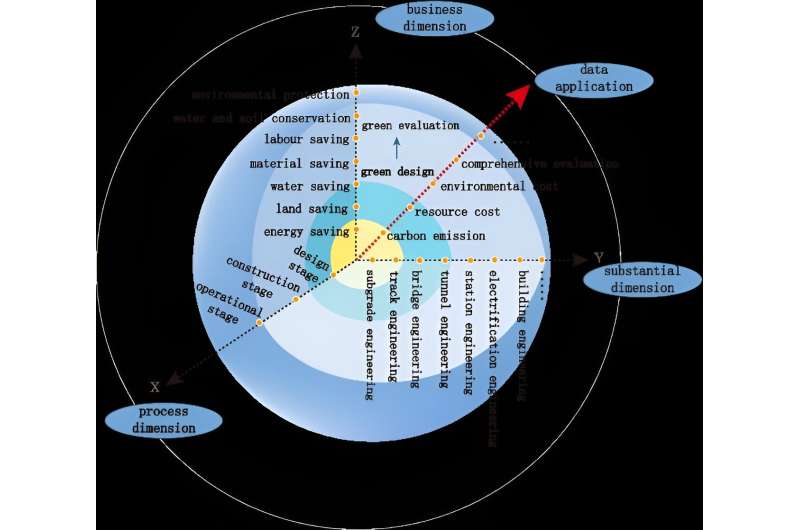This article has been reviewed according to Science X's editorial process and policies. Editors have highlighted the following attributes while ensuring the content's credibility:
fact-checked
proofread
Design and implementation of railway green performance basic data collection system

Railway transportation plays a crucial role in China's comprehensive transportation system. In 2020, the China National Railway Group issued the "Outline of Railway Leading Planning for Building a Transport Power in the New Era," clearly stating the goal of completing a national railway network of approximately 200,000 kilometers and a high-speed railway network of about 70,000 kilometers by 2035.
This indicates a rapid development in the railway industry. However, against the backdrop of the country's continuous promotion of comprehensive green transformation for economic and social development and the goal of peaking carbon emissions by 2030 and achieving carbon neutrality by 2060, there is a growing emphasis on elevating the environmental performance standards for railway construction projects.
Therefore, in-depth research on key green and environmental protection technologies for railway construction projects, quantifying the contribution of railways to national green development policies, and achieving synergistic efficiency in energy savings, carbon reduction, and pollution control have become pressing challenges in the railway industry.
Existing research on railway green performance is mostly based on quantitative assessment models, requiring high-quality basic data on energy consumption and carbon emissions for various professional aspects of railway engineering. However, the current green performance-related data for various professional aspects of railway engineering is isolated, dispersed, and heterogeneous, making applications challenging.
To that end, a pair of researchers from China Academy of Railway Sciences Corporation Limited addressed the issues on the collection and management of fundamental data for railway green performance. They established a railway green performance basic database using metadata and data exchange schemas. Additionally, a comprehensive data classification system has been implemented, encompassing perspectives from businesses, processes, and entities.
The researchers published their study in the journal High-speed Railway.
"We introduced a scheme for extracting BIM (building information modeling) model data, leveraging field similarity matching, and proposed a document content extraction scheme based on image recognition," says corresponding author Xiangru Lyu. "This has led to the development of a railway green performance basic data collection system, enabling efficient data collection and integrated management."
This system is poised to offer essential data support for diverse applications, including railway carbon emissions accounting, green cost-benefit analysis, and the evaluation of green design solutions.
More information: Xiangru Lyu et al, Design and implementation of railway green performance basic data collection system, High-speed Railway (2023). DOI: 10.1016/j.hspr.2023.11.003


















